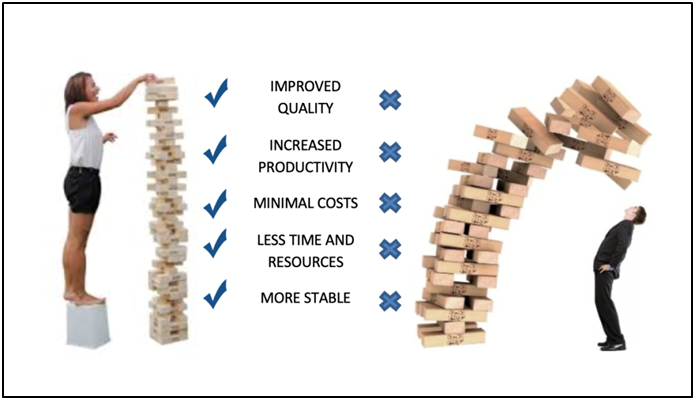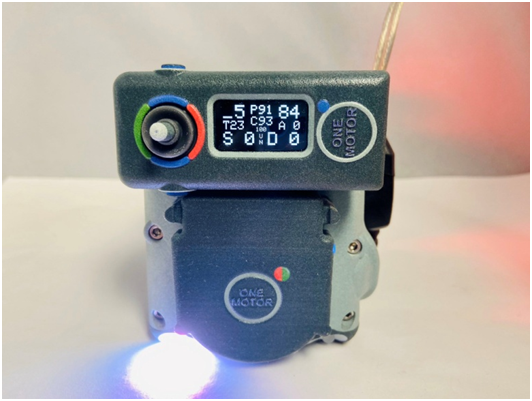
David Macfie, Charles R. Goulding, and Alyssa Schneider explore the use of 3D printing in just in time manufacturing.
We are pleased to provide this 3D Printing Just In Time (JIT) article at the suggestion of David Macfie of Cimquest, the leading east coast 3D printing engineering services firm.
Just In Time evolved from the Toyota Production System (TPS), which is an inventory method used to reduce costs and increase effectiveness. This technique avoids storage and delivery, and normally provides a quick and easy utilization of spare parts available Just In Time.
Political Unrest and Nuclear Disaster
Recently, many major events have demonstrated disruptions in JIT supply chains which can create a major risk for businesses. For example, the political unrest in Hong Kong and the toy industry. Hong Kong produces a majority of the world’s toys which are designed, manufactured, and shipped globally. When the supply chain is disrupted, it causes turmoil because there are no other resources on this scale to provide toys. In addition, after the Fukushima power plant explosion on March 11th, 2011, there was a sudden loss of resources and necessities. The far-flung effects of the Fukushima explosion included stopping production at a GM truck plant in Louisiana because of a parts shortage and slowdowns at Apple and other cell phone manufacturers related to the electronic component shortages. The above provide examples of major supply chain disruptions where 3D printing can be of great assistance.
JIT Examples Provided by Cimquest

ShareRoller is a New York City-based company that allows bike riders to easily add a motorized element to their bikes, scooters, etc. The sales of bikes have been increasing since the start of COVID-19 and with the help of HP Multi Jet Fusion (MJF), 3D printing provided by Cimquest, components can be produced on an immediate basis. The OneMotor system that ShareRoller utilizes allows standard bikes to be transformed into power bikes interchangeably. The use of 3D printing has allowed ShareRoller to produce components quickly, easily, and even has improved quality.
Cimquest is also working with the leading international manufacturer of inner soles to make custom orthotics with the help of 3D printing. Because of COVID-19, it is very difficult for people to see a podiatrist whereas 3D printing helps exponentially. The quality and output of the product almost tripled with 3D printing and less material is wasted in the process. In addition, the custom inner soles are created instantly which lowers the patient’s time waiting for the orthotic and enables foot pain to be relieved quicker. 3D printing technology is innovating the world in ways people didn’t even know it could.
Just In Case Inventory
The Just In Case inventory removes all excess waste during the production process to save valuable time and effort. The COVID-19 pandemic presented numerous examples of supply chain disruptions not only for personal protective equipment (PPE) but also for standard components such as global auto parts. Recently, because of this pandemic, the use of these supply chains have been very relevant and further appreciated. 3D printing, with the help of Just In Time, can provide the needed supply chain protection while eliminating both risks and shipping costs. This is now being called Just In Case inventory.
The world after COVID-19 will be very different with much more caution and control. 3D printing has already demonstrated its value during the COVID-19 crisis with the manufacture of PPE and ventilator parts. Just In Time enhanced with 3D printing is an excellent way to secure the ongoing situation.
The Research and Development Tax Credit
Enacted in 1981, the now permanent Federal Research and Development (R&D) Tax Credit allows a credit that typically ranges from 4%-7% of eligible spending for new and improved products and processes. Qualified research must meet the following four criteria:
- Must be technological in nature
- Must be a component of the taxpayer’s business
- Must represent R&D in the experimental sense and generally includes all such costs related to the development or improvement of a product or process
- Must eliminate uncertainty through a process of experimentation that considers one or more alternatives
Eligible costs include US employee wages, cost of supplies consumed in the R&D process, cost of pre-production testing, US contract research expenses, and certain costs associated with developing a patent.
On December 18, 2015, President Obama signed the PATH Act, making the R&D Tax Credit permanent. Beginning in 2016, the R&D credit can be used to offset Alternative Minimum tax for companies with revenue below $50MM and, startup businesses can obtain up to $250,000 per year in payroll tax cash rebates.
Conclusion
3D printing combined with Just In Time production reduces costs and maximizes efficiency. The post-COVID-19 world is in need of progression and improvement. Cimquest is a great resource for these solutions throughout the East Coast from Maine to Florida.
